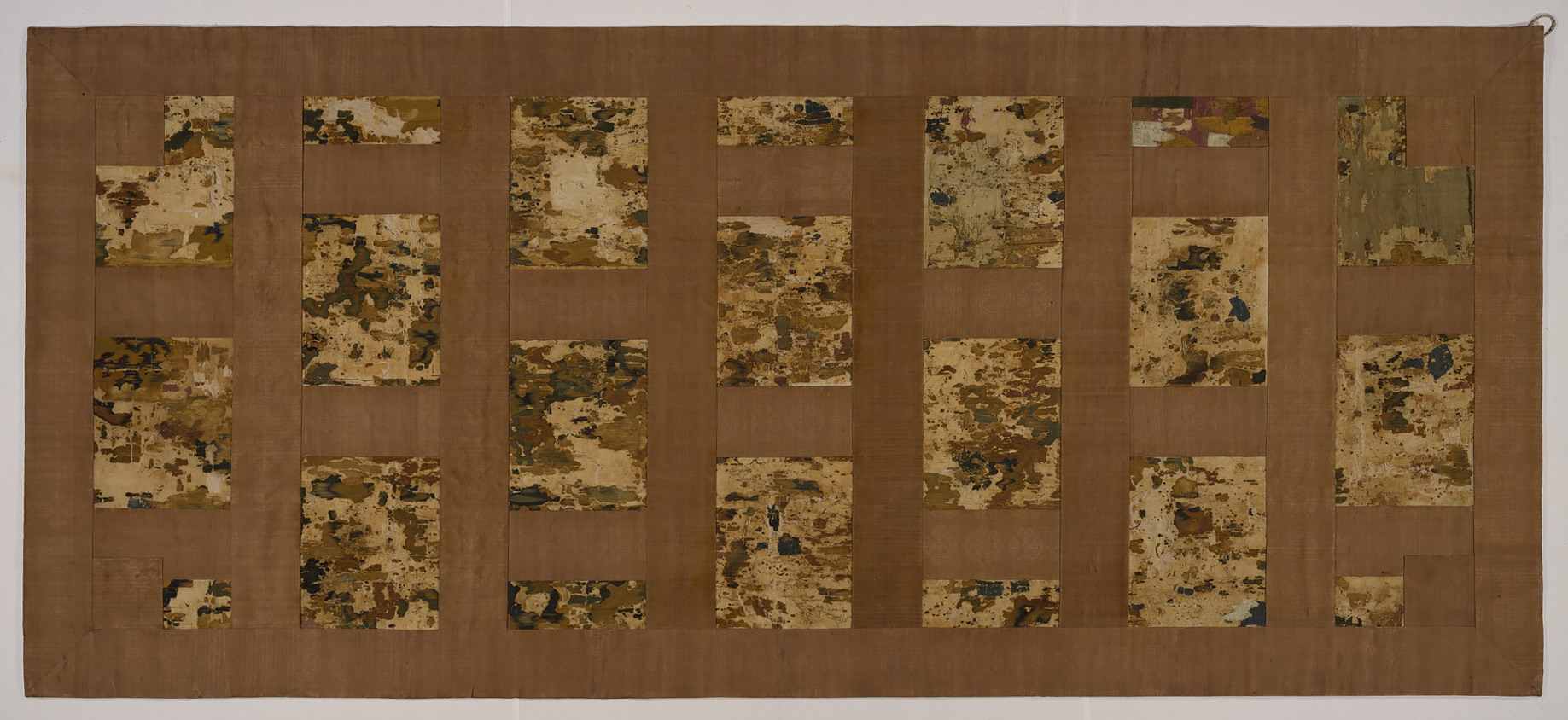- TOP
- The KNM Collection
- Masterpieces of the KNM
- Textiles and Costume
- Kenda Kokushi Kesa
*Click or tap image to enlarge.
Textiles and Costume
Kenda Kokushi Kesa
- China, Tang Dynasty, 8th century
- Silk tapestry weave with supplementary weft patterning; silk twill damask
- H. 115.7 cm, W. 272.2 cm
- Kyōōgokoku-ji Temple, Kyoto
This Buddhist kesa (a Buddhist priest's cassock) was reportedly given to the Japanese priest Kukai by a Chinese priest named Huiquo during the Tang Dynasty, when Kukai was studying in China. It is registered in the Goshorai Mokuroku, a list of objects that Kukai brought back to Japan. Kenda is said to indicate the yellowish-red color used for the robe, and kokushi means "tapestry weave."
The central denso part of the robe uses silk threads in approximately ten different colors, including purple, moegi (bluish-yellow), yellow, and indigo, to create a tapestry-weave pattern of clouds. Some sections appear to have supplementary purple embroidery, but closer examination reveals that these too are woven techniques.
These cloud and purple stitching patterns were created to resemble the stains of funzo-e robes, the original kesa stitched together from rags. This kesa elaborately imitates those symbolic robes of poverty in high-quality silk tapestry.







